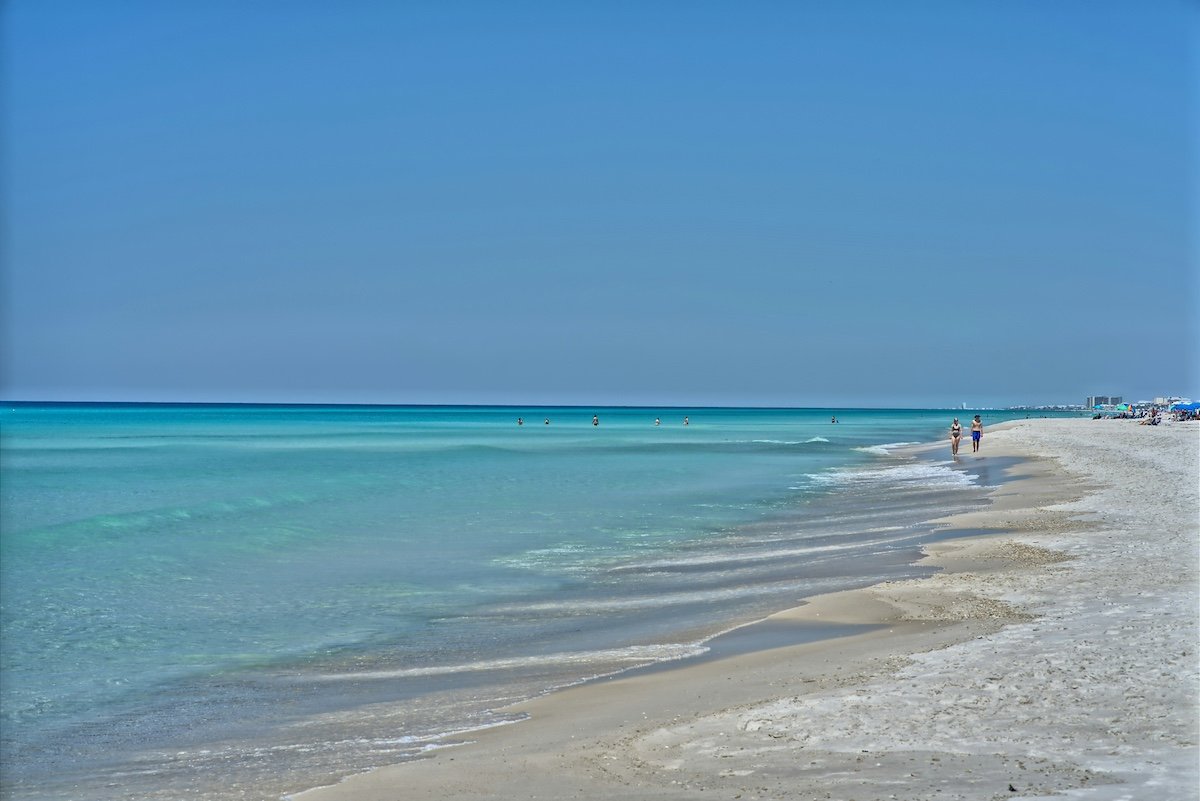Why Are So Many People Dying on Florida Beaches?

It’s hard to even keep straight the number of people who have drowned off Florida’s Gulf Coast in the past week. Reports suggest five people have died at Panama City Beach in the past several days (some even claim six). And the Weather Channel is tallying eight total deaths in the past four days across multiple Florida beaches in the same general area. But why?
The short and simple answer is the rip currents. NOAA defines a rip current as “a localized current that flows away from the shoreline toward the ocean, perpendicular or at an acute angle to the shoreline.”
Rip currents on Gulf Coast are dangerously strong right now, and despite posted warnings at Bay County beaches on the western coast of Florida, which borders the Gulf of Mexico, many people are still going in the water. Sadly, rip currents can drown even the strongest swimmers.
NOAA says: “Rip currents typically reach speeds of 1 to 2 feet per second. However, some rip currents have been measured at 8 feet per second—faster than any Olympic swimmer ever recorded.”
Tragic Beach Deaths
The Bay County Sheriff’s Office has taken to Facebook multiple times to share the sad news about some of the recent Florida beach deaths. Three of the victims were young men visiting Bay County from out of state. They had checked into their rental, hurried to the beach for a dip, and drowned.
A 60-year-old woman visiting the state with her family is also among the drowning victims at Panama City Beach.
Though there are red flag warnings and life guards on duty, some people visiting these popular vacation spots are still taking their chances. It’s been a tragic week for the families of the victims and the first responders in Bay County, and summer has just begun.
How to Survive a Rip Current
The best way to survive a rip current is to not enter the water when one is present. However, if you ever do find yourself being pulled into a rip current, here is what NOAA suggests you do:
“The best way to escape a rip current is by swimming parallel to the shore instead of towards it, since most rip currents are less than 80 feet wide. A swimmer can also let the current carry him or her out to sea until the force weakens, because rip currents stay close to shore and usually dissipate just beyond the line of breaking waves.”
Perhaps the most important piece of advice is to try not to panic. “Continue to breathe, try to keep your head above water, and don’t exhaust yourself fighting against the force of the current,” NOAA says.
Source: https://outdoors.com/why-are-so-many-people-dying-on-florida-beaches/







